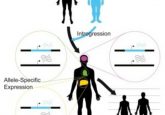Sweet as sugar

The sugarcane genome, which is more complicated than the human genome, has finally been sequenced.

Which is more complicated: the human genome or the sugarcane genome? Turns out, it is in fact the sugarcane genome. However, scientists from the French Agricultural Research Centre for International Development (CIRAD; Montpellier, France) have fully sequenced the sugarcane genome, sparking hope that this will make breeding much easier as molecular biology techniques can now be implemented.
Sugarcane accounts for almost 80% of the world’s sugar and has recently been highlighted as a key player in biomass production. The ability to sequence its genome was therefore of high importance.
The use of conventional sequencing methods has proven futile in previous attempts to sequence the sugarcane genome. This is because of its high complexity. Whilst the human genome comprises two copies of each chromosome, the sugarcane genome comprises between 10 and 12. The number of copies of each chromosome can also vary between different categories and there are many structural differences between chromosomes, too.
In order to sequence the sugarcane genome, the CIRAD scientists looked to the genome of sorghum plants as a discovery 20-years previous had shown them to be incredibly similar. The team utilized the already sequenced sorghum genome as a template to build upon for the sequencing of the sugarcane genome.
“Thanks to this novel method, the reference sequence obtained for a cultivar from Réunion (Island), R570, is very good quality,” commented Angélique D’Hont, the study coordinator and CIRAD geneticist.
“Having a reference sequence for a species radically changes all the genomic, and more broadly, genetic approaches for that species.”
It is hoped this development will enable the creation of new varieties of sugarcane for different uses.





